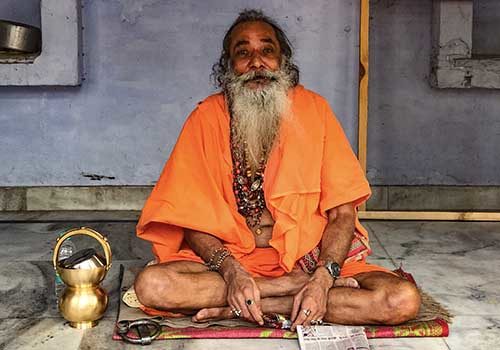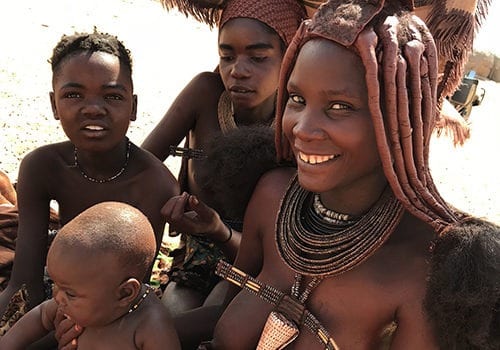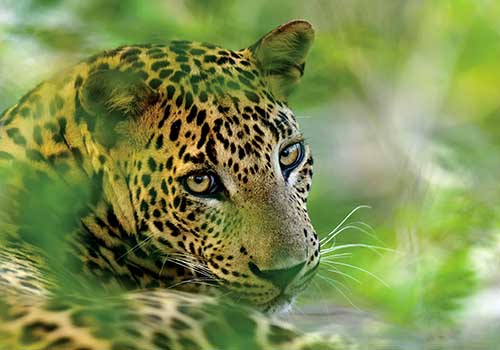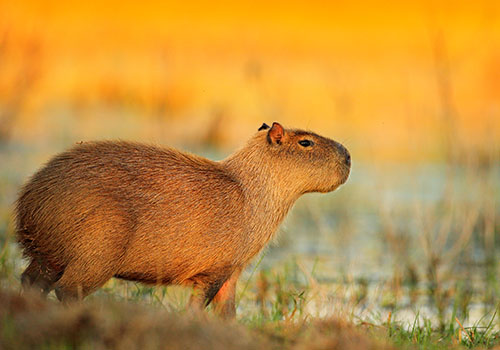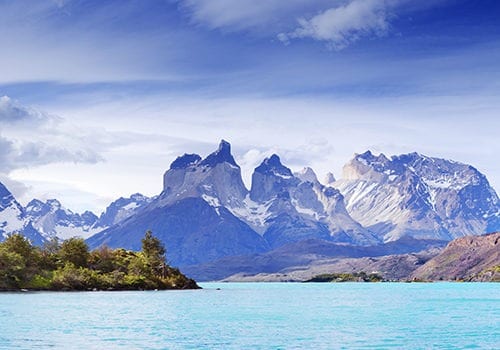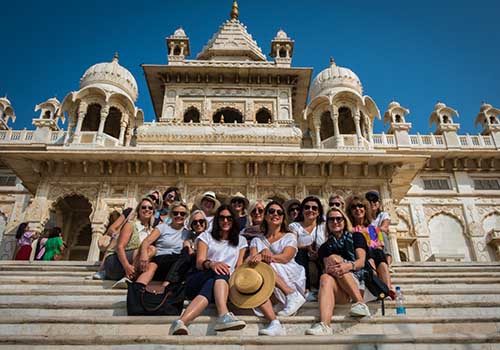
KEY INFORMATION TO PREPARE FOR YOUR JOURNEY
Nestled in the eastern Himalayas, Bhutan is a landlocked kingdom bordered by China to the north and India to the south, east, and west.
Having only opened its doors to tourism in 1974, the ‘Dragon Kingdom’ has remained relatively isolated from western influence, enabling it to maintain a culture rich in traditions based on its strong Buddhist heritage. It influences every aspect of Bhutanese society from the pilgrims spinning their prayer wheels and chanting mantras to the red-robed monks performing sacred ceremonies in the monasteries. Prayer flags flutter across mountains and rivers, and chortens stand at every corner.
It boasts a great diversity of awe-inspiring landscapes of snow-clad mountains, lush valleys, dense forests and rushing streams that are considered to be the abodes of the gods. The architecture of fortresses and monasteries is astonishing, and wherever you go you will be greeted by friendly and traditional Bhutanese hospitality.
Bhutan is a destination that even the most seasoned traveller considers a privilege to visit. Our tailor-designed, private journeys will take you deep into the heart of Bhutan ensuring that you see the very best the kingdom has to offer, whilst not compromising on the comfort and quality of your journey.
This information will assist in preparing for your departure and includes helpful travel hints for when you are there.
PLEASE NOTE: All pre-departure information was correct at the time of writing, but should be used as a guide only since requirements can change at short notice and without warning. Consult Smart Traveller or contact the Royal Bhutanese Embassy or the appropriate authority prior to departure to confirm all details.
AT A GLANCE
BHUTAN KEY FACTS
Time: GMT +6 hours | AEST -4 hours
Capital: Thimphu
International Airport: Paro Airport (PBH)
Official languages: Dzongkha
Religion: The official religion in Bhutan is Buddhism, which is practiced by up to 85% of the population; the rest of the population is mainly Hindu.
Electrical Current: 240V | UK 3 square pin – Type G
Currency: Ngultrum Nu | BTN
Australian High Commission in New Delhi: There is no Australian High Commission in Bhutan, so the High Commission in New Delhi is responsible for consulate matters: 1/50 G, Shantipath, Chanakyapuri, New Delhi 110021 | T: +91 11 4139 9900 | E: ahc.newdelhi@dfat.gov.au
Visa: Yes – currently required for Australian & New Zealand passport holders – refer to ‘Passport and Visa Requirements‘ for further details.
USEFUL WEBSITES
Smart Traveller – https://www.smartraveller.gov.au/destinations/asia/bhutan
Travel Doctor-TMVC Smart Traveller – https://www.traveldoctor.com.au/destinations/bhutan
Royal Bhutanese Embassy – https://www.mfa.gov.bt/rbecanberra/

PASSPORT & VISA REQUIREMENTS
PASSPORTS
Your passport must be valid for at least six months after your return to Australia and have at least two blank pages for every entry and country you intend to visit on your journey. If your passport does not meet these requirements you must obtain a new one. The Australian Passport Office website is www.passports.gov.au.
It is a wise precaution to carry a photocopy of your passport separately and leave a copy at home. This will aid authorities in processing a new passport should yours get stolen or lost.
If you have dual citizenship and more than one passport, we strongly recommend that you use only one of these during your travels, as in some countries it is considered illegal to have two or more passports. Be sure to use the same passport on entry and exit from a country, and never surrender your passport.
If your passport name is different to your commonly used name, advise us of this and ensure your airline reservations match those of your passport name.
VISAS
Australian and New Zealand passport holders require a Visa to enter Bhutan and all tourists must obtain a visa clearance before travel to Bhutan.
Visas are processed through an online system by an approved, licensed Bhutanese tour operator, and then granted by the Tourism Council of Bhutan.
At your point of entry, you will be required to show your visa clearance letter – the visa will then be stamped into your passport.
The Classic Safari Company can assist with the visa application process however it is your responsibility to ensure you have the correct visa and travel documents to undertake your itinerary.

AIR ARRANGEMENTS
PASSPORT NAME
Your airline reservation must be made in your legal name as it appears on your passport (i.e. names on tickets and passports must match). If your passport name is different to your commonly used name, advise us of this and ensure your airline reservation name matches those on your passport.
SPECIAL REQUESTS
Do let us know your seat preferences and any special requests so we can advise the airlines accordingly, however airlines do not guarantee seat preferences and some airlines now charge extra for this service.
Be sure to mention any other special requests you may have such as dietary requirements, kids meals and wheelchair assistance.
FREQUENT FLYERS
Prior to your departure ensure you have provided your consultant with your frequent flyer details so they can be added to your flight booking.
If you intend to use frequent flyer miles for your air travel you must book your own flights directly with the airline. It is a good idea to hold onto all your boarding passes in the event you have a query regarding points on your return.
DIY FLIGHT ARRANGEMENTS
If your flights are not booked by us ensure you provide your consultant with a copy of your flight itinerary so that we can share this with our ground operators who are responsible for booking corresponding ground transfers.

CLIMATE, WEATHER & SEASONS
CLIMATE
Bhutan’s climate is diverse due to dramatic variations in elevation.
Bhutan’s altitude range, from subtropical valleys to alpine peaks, and its busy festival calendar means you can visit Bhutan at any time of the year to explore its attractions and witness colourful festivals.
The most popular time to visit Bhutan is during autumn (Sep-Nov). The weather is milder, the skies are generally clearer making it particularly suitable for hiking and trekking. Spring (Mar-May) can be cloudier and have more rain than autumn, however the wildlife and flowers are at their most vivid. The magnificent rhododendrons, magnolias, and other wildflowers are in bloom and birdlife is abundant. Many of the large festivals take place during these seasons.
Winter (Dec-Feb) can be quite cold, however, the skies are usually clear providing good photographic opportunities, and there are also fewer tourists around. Please note that in January and February, snow may block some mountain passes restricting access from the west to the central valleys.
During the summer monsoon season (mid Jun-Aug) a few showers of light rainfall can be expected. The weather will however be pleasantly warm during this period.
Because of the diversity of temperatures across the country a comprehensive weather chart is available below:
| PARO | JAN | FEB | MAR | APR | MAY | JUN | JUL | AUG | SEP | OCT | NOV | DEC |
|---|---|---|---|---|---|---|---|---|---|---|---|---|
| Temperature (°C) | -6 - 9 | -3 - 13 | -1 - 15 | 5 - 18 | 10 - 24 | 14 - 25 | 14 - 27 | 14 - 25 | 11 - 23 | 7 - 19 | 1 - 14 | -2 - 11 |
| THIMPU | JAN | FEB | MAR | APR | MAY | JUN | JUL | AUG | SEP | OCT | NOV | DEC |
|---|---|---|---|---|---|---|---|---|---|---|---|---|
| Temperature (°C) | -3 - 12 | 0 - 14 | 3 - 17 | 7 - 20 | 13 - 23 | 15 - 24 | 15 - 26 | 15 - 25 | 15 - 23 | 10 - 22 | 5 - 18 | -1 - 15 |
| PUNAKHA | JAN | FEB | MAR | APR | MAY | JUN | JUL | AUG | SEP | OCT | NOV | DEC |
|---|---|---|---|---|---|---|---|---|---|---|---|---|
| Temperature (°C) | 4 - 17 | 7 - 19 | 10 - 23 | 12 - 26 | 17 - 29 | 20 - 29 | 20 - 30 | 20 - 29 | 19 - 28 | 14 - 26 | 9 - 23 | 6 - 19 |
| TRONGSA | JAN | FEB | MAR | APR | MAY | JUN | JUL | AUG | SEP | OCT | NOV | DEC |
|---|---|---|---|---|---|---|---|---|---|---|---|---|
| Temperature (°C) | -1 - 13 | 0 - 14 | 4 - 17 | 6 - 20 | 11 - 21 | 13 - 22 | 15 - 25 | 15 - 24 | 14 - 23 | 11 - 22 | 6 - 20 | 2 - 18 |
| BUMTHANG | JAN | FEB | MAR | APR | MAY | JUN | JUL | AUG | SEP | OCT | NOV | DEC |
|---|---|---|---|---|---|---|---|---|---|---|---|---|
| Temperature (°C) | -5 - 11 | -2 - 10 | 3 - 16 | 3 - 19 | 9 - 21 | 13 - 23 | 13 - 24 | 13 - 23 | 12 - 22 | 5 - 20 | -1 - 16 | -3 - 12 |
| MONGAR | JAN | FEB | MAR | APR | MAY | JUN | JUL | AUG | SEP | OCT | NOV | DEC |
|---|---|---|---|---|---|---|---|---|---|---|---|---|
| Temperature (°C) | 8 - 16 | 8 - 16 | 11 - 20 | 14 - 23 | 17 - 25 | 19 - 26 | 19 - 27 | 19 - 25 | 19 - 25 | 15 - 23 | 11 - 20 | 9 - 18 |
| TRASHIGANG | JAN | FEB | MAR | APR | MAY | JUN | JUL | AUG | SEP | OCT | NOV | DEC |
|---|---|---|---|---|---|---|---|---|---|---|---|---|
| Temperature (°C) | 10 - 20 | 11 - 22 | 14 - 25 | 17 - 28 | 22 - 30 | 22 - 31 | 23 - 32 | 22 - 30 | 21 - 30 | 17 - 29 | 13 - 26 | 11 - 23 |

LUGGAGE & PACKING
LUGGAGE
The only restriction you need to consider when it comes to luggage and travelling through Bhutan is the size of your vehicle and the number of people in your travelling party. Essentially if you travel with the standard check-in allowance and don’t go overboard with your packing you’ll be fine. Wheelie bags with soft sides are ideal for manipulating into the trunk of cars, and a small backpack or shoulder bag for day to day items is recommended. All luggage should also be capable of withstanding rugged treatment and please do note the size & weight restriction on domestic flights in Bhutan if you are travelling by air internally. If in doubt ask us!
WHAT TO PACK
We recommend you pack casual, light, cotton clothing for summer & extra layers in winter as it gets very cold – particularly the higher you travel into the Himalaya. Jeans, sweaters and a jacket are recommended, along with a quality puffer jacket and sturdy walking shoes. Evenings in summer can also be quite cool so packing an extra layer is recommended.
It is best to travel in clothes that you feel most comfortable in, however you do need to be aware of cultural sensitivities. Women should dress discreetly and modestly. Bhutanese women rarely, if ever, show their knees or their shoulders. We therefore recommend you do the same to display your respect for their culture. Avoid short shorts (unless hiking away from main cities and towns) – or if you do choose to wear these we would suggest you have a scarf or sarong with you in order to cover up should you wish, or need, to do so.
Laundry is offered in almost every hotel in Bhutan, however please note that clothes are often hand washed so avoid handing over delicate or expensive items if you are at all worried about them. Most hotels offer overnight laundry so there is no need for excess clothing. You may be requested , or may prefer, to do your own under garments.

CLOTHING
- light cotton shirts or t-shirts, both short & long sleeved
- sweater/fleece
- pants – a combination of long & 3/4 pants (2 to 3 pairs)
- casual dress or skirt
- casual evening wear
- a good pair of covered walking shoes – Indian streets aren’t clean
- casual shoes & sandals or flip flops for around your hotel
- socks & undergarments
- gloves, beanie & scarf for Himalayan journeys
- PJs
- swimwear
- hat or Cap
ACCESSIORIES
- sunglasses
- spare prescription glasses
- contact lenses and saline
- pen, paper, scrap book
- a novel
- camera with spare memory cards
- chargers for all electricals
- adaptor plugs
- small torch + batteries in the event of a power outage
- sun hat or cap
- a scarf – for ladies to wear when visiting mosques or temples
- toiletries
- ear plugs – India can be noisy (as can your travelling companion)
- a water bottle
- medical kit
INSURANCE
ENSURE YOU’RE INSURED
Although we hope you’ll never need it, having a comprehensive travel insurance policy is always highly recommended. No international travel is ever entirely without risk, and even the best laid plans can go awry.
Whilst we cannot recommend the right policy for you (as only you know you and what you need), below we have provided links to sites and articles that may help you navigate your way through the choices available.
PLEASE NOTE: The information provided here is subject to change at any time. Please always read the travel insurers’ relevant Product Disclosure Statements and refer to the Australian Government’s Department of Foreign Affairs & Trade’s (DFAT) Smartraveller website for up to date travel advice and their advice on Travel Insurance.
Whichever insurer you choose please provide us with a copy of your chosen policy, insurance certificate and all emergency contact details for our records.
WHAT WE OFFER
The Classic Safari Company is currently associated with the following travel insurance providers :
Each of the above insurers has varying strengths depending on the activities included in the trip you are undertaking. Their websites are easy to navigate and once you have entered your personal details and selected your preferences – be that to reduce your excess, include cover for cruising, increase your cover for cancellation or obtain cover for a pre-existing medical condition – the website will generate a quote. If you are satisfied with what is presented, you simply need to follow the steps to purchase your insurance policy online.
At what point in the booking process should I purchase travel insurance?
It is advisable to obtain comprehensive travel insurance at the time of confirmation/paying a deposit to ensure you are covered from the moment you book.
What should I look for when selecting coverage?
Most insurance companies will cover the basics such lost luggage or flight cancellations, but levels of medical cover vary from policy to policy, and the cover for global issues, such as pandemics, has changed significantly over the past few years. This excellent article, Travel Insurance Simplified, published on 07 April 2022, details what you need to look for when selecting coverage for your next trip. Smartraveller also publishes helpful advice on Travel Insurance.
What is the impact of DFAT travel advice?
Some insurance will not cover travel to countries where the Australian Department of Foreign Affairs & Trade (DFAT) is warning Australians to “Reconsider your need to travel” (Level 3) and most don’t cover travel to places with a “Do not travel” warning (Level 4). Most international travel insurance covers visits to Level 2 countries. DFAT travel advisories can change over time and this may affect your travel insurance coverage. You should always check the advice levels on the Smartraveller website.
How much does travel insurance cost?
Costs will vary depending on your age, destination, duration of your journey, preferred excess, cancellation cover, and if you have any pre-existing medical conditions. It is important to note that the inclusions with each policy are different so price is not the only factor you should consider when choosing travel insurance – cheaper policies often don’t provide the cover you might expect. You should read the small print carefully before purchasing any travel insurance policy to ensure it is suitable for your needs.
Can I use my credit card travel insurance?
Many premium credit cards come with complimentary travel insurance. If you elect to only be covered by your credit card travel insurance it is paramount that you understand the terms and conditions, policy availability subject to your age, trip duration and destination, item limits, sub-limits and exclusions that may apply. It is also worth noting that many credit card travel insurance policies automatically exclude cover for epidemics and pandemics and may not cover charter flights.
What about reciprocal health care agreements?
If you’re travelling to one of the 11 countries for which Australia has reciprocal health care agreements, you may also be able to access free health care at your destination under these arrangements. The exact benefits available to Australians in each partner country vary. At a minimum, you can generally access emergency medical and hospital care in any of these 11 countries by simply showing your valid Australian Medicare card.
Even if you’re travelling to a country that has a reciprocal health care agreement with Australia, it’s still a very good idea to get travel insurance as these care agreements can be quite limited. Travel insurance will also cover you for everything else besides your health, such as delays or cancellations.
HEALTH & VACCINATIONS
VACCINATIONS
It may be necessary to take medical precaution prior to, and whilst travelling. As we are not qualified to offer advice, we recommend you contact your GP or the Travel Doctor-TMVC who have the most up‐to-date information available. Requirements are highly personal depending on your health profile and the activities in your itinerary. Some vaccinations must be given well in advance of travel, so we suggest seeking medical advice as soon as you start to plan your trip. Be sure to ask what vaccinations or medications may be required to enter India and to re-enter Australia.
You can also refer to SmartTraveller for a guide as to what may be required, however you should always seek professional medical advice before travelling.
In Bhutan, medical treatment is available in Thimphu and other major cities/towns throughout the country. Medical facilities and services in the countryside however are severely restricted. Emergency evacuation by helicopter is often not an option.
Please ensure you advise us of any allergies or medical conditions prior to travel.
We also recommend that you have a dental check up prior to leaving home.
If your itinerary includes travel to the Himalayas be sure you are aware of the symptoms of altitude sickness and you carry the recommended medication.
STAY HEALTHY ON YOUR TRAVELS
There is no reason to get ill in this part of the world as long as you are sensible. Even if you are used to dining out on exotic cuisines at home, the food will still be vastly different to what you are accustomed to. Because of the different spices, herbs & the density and composition of water, you may find that there is initially an effect on your stomach. This normally passes within 48 hours as you adjust to the change in diet but if the condition persists you should consult a doctor.
To avoid health problems here are a few basic guidelines:
- Get all the vaccinations your doctor recommends.
- Do not drink the water unless you know it has been purified or boiled. Never drink the water from the tap – use the flask in your room or ask for boiled or bottled water. You may wish to carry purification tablets with you.
- Do not eat uncooked vegetables or meat, peel all fruit before you eat it, avoid salads and only eat food which has been recently cooked.
- Avoid ice in your drinks (unless the hotel has a water purification system).
- Be very particular about personal hygiene, keeping your hands very clean.
- We do not recommend you eat from street vendors unless you are brave!
- Cover up – use insect repellent, mosquito nets and wear long, loose, light-coloured clothing
- Don’t swim in fresh water unless told it is safe to do so
NOTE: If you have the appropriate level of cover you may be able to claim a rebate through your private health insurance under your extras cover for part of the cost of your vaccines and anti-malarial medications. We recommend you check with your private health insurance company.
PERSONAL MEDICAL KIT
Travelling with a comprehensive Medical Kit is as important as your preparation prior to departure. Below is a list of basic items that are a suggestion to combat minor ailments.
- Water purification: most stomach problems arise from water so taking a supply of water purification tablets is wise. Purification tablets can, however, affect the taste of water so you may wish to carry a water bottle with a purification element.
- Travel motion sickness tablets – particularly if you get ‘car sick’
- Insect repellent and an anti-itch cream should you get bitten
- Cold & Flu remedies
- Throat lozenges
- Anti-histamines
- A course of antibiotics
- Nausea tablets (such as Stematol)
- Diarrhea tablets (such as Lomotil)
- Hydration salts (such as Hydralyte)
- Indigestion tablets (such as QuickEze)
- Antiseptic cream
- Aspirin or Panadol
- Anti-bacterial hand wash & a small packet of tissues/hand wipes
- Blister pads, bandaids and/or steri strips
- Malaria Tablets – if they have been recommended for the destination you are visiting and/or the time of year you are travelling
- Personal sanitary items
- Eye drops and/or contact lens solution
- Sunscreen & lip balm
- Any prescribed medication – please also take a copy of your prescription with you
ALTITUDE SICKNESS
Altitude sickness is caused by abrupt change from low elevations to high altitudes and it is likely you will experienced it when you first arrive in Bhutan. Mild symptoms include: headache, shortness of breath, light-headedness, difficulty sleeping, loss of appetite, mild nausea and fatigue. Take it easy the first day or two upon arrival. Be sure to drink fluids, avoid alcohol, eat regularly and get plenty of rest. Your body will soon acclimatize and you will feel fine.
Trekkers hiking up to high elevations may feel the continuing effects of altitude as they make their ascent. Local guides will not allow you to go too high too fast and are prepared to adjust the pace if necessary, so the risk of Acute Mountain Sickness is extremely low. If extreme symptoms manifest themselves in you or if you notice symptoms in a fellow trekker, please tell your guide immediately. The first response to severe symptoms should be a quick descent to a lower altitude.
Most importantly ask your doctor or the Travellers Medical & Vaccination Centre for advice before travelling.
BHUTAN TOWNSHIP ALTITUDES
| Paro | 2,250m / 7,382ft |
| Thimpu | 2,350m / 7,710ft |
| Phuentsholing | 300m / 985ft |
| Punakha | 1,310m / 4,300ft |
| Wangduephodrang | 1,310m / 4,300ft |
| Phobjhika (Gangtey) | 2,900m / 9,510ft |
| Trongsa | 2,200m / 7,215ft |
| Bumthang (Jakar) | 2,800m / 9,185ft |
| Mongar | 1,700m / 5,580ft |
| Trashigang | 1,100m / 3,609ft |
| Trashiyangtshe | 1,850m / 6,070ft |
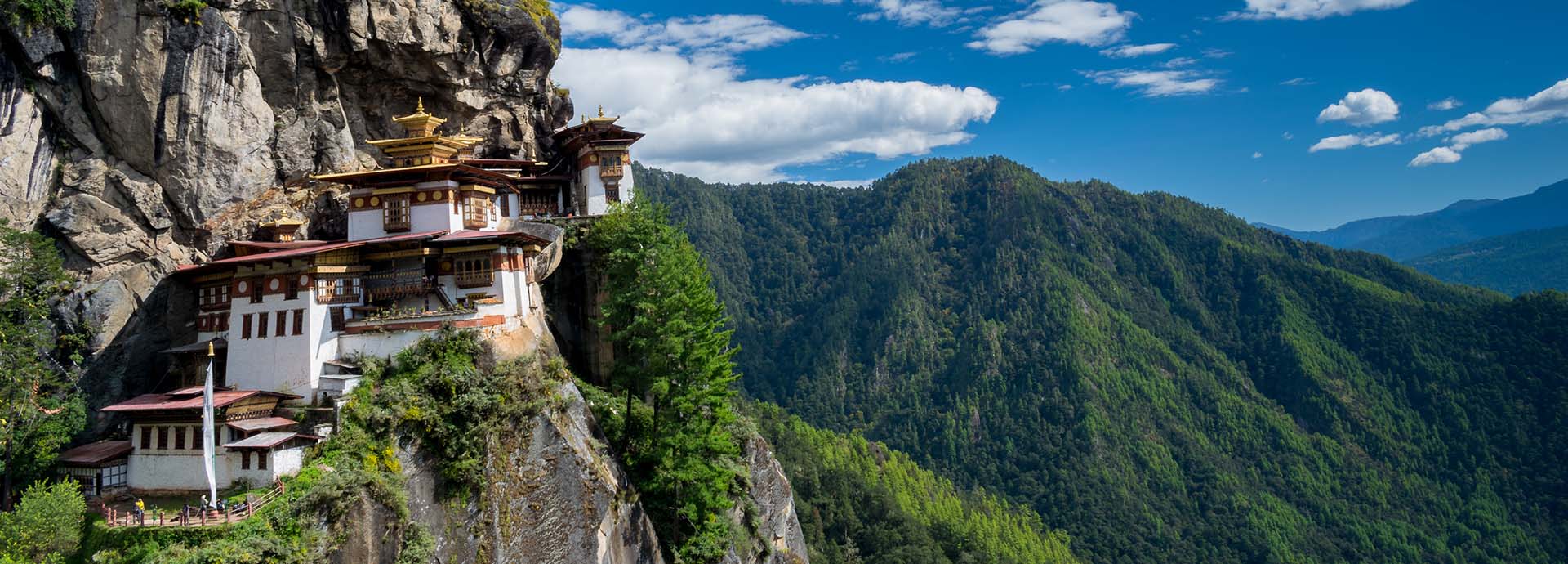
FOOD & DRINK
Bhutanese food is generally known for its simplicity, but in reality it really is quite a specialty. A typical Bhutanese meal features local red rice served with Ema Datse (a vegetarian dish made of cheese and chili), local seasonal vegetables and a little dried meat, cooked with very hot chillies, or a sauce made from chillies and cheese.
If eating in restaurants, it is often best to approach your meals in Bhutan with a sense of adventure and dare to try something new to get the most out of your journey; or, if you prefer, stick to the Chinese, continental or Indian cuisine that is also often on offer.

Soft drinks are available throughout Bhutan, however there are only a few varieties of alcoholic drinks, including beer, and these are only available in hotels & restaurants in the major cities – and they tend to be pricey! White wine is particularly expensive in Bhutan and a bottle of Jacobs Creek Shiraz could set you back as much as A$80. The Bhutanese prefer local homebrewed alcoholic drinks mainly made from wheat, millet, corn and rice. If you prefer to bring your own spirits the import limit is 1 x 1 litre bottle per person.
CULTURAL ETIQUETTE
WHAT TO EXPECT
You will find the Bhutanese people to be very open and friendly, sharing a deep respect for religion, their elders and the monarchy. Their customs are complex and not easily understood in a short visit to the country but a good rule of thumb is to follow appropriate Western standards of courtesy.
Here are some points to remember :
- Shaking hands is not a Bhutanese tradition, although it is becoming more common. A formal greeting is to bow with hands open and outstretched and the palms up.
- When wishing to be polite or to indicate interest, the Bhutanese add “la” to the end of a sentence, even when speaking in English. Using the word la at the end of a sentence in either Dzonkha or English is a sign of respect.
- Refrain from touching the crown of the head, for example a young child’s, as this is considered a special part of the body
- It is best to ask permission before entering houses. If in doubt, ask your guide and if allowed it is important to always remember to remove your shoes & hat before entering.
- Do not use your finger to point, especially at deities or religious objects. Instead, use an open hand with the palm up.
- When waving someone towards you, keep your palm pointed down
- Use your right hand, or better still, both hands to give or receive an object
- Bring small gifts for your guide and for those whose homes you may visit.
- Do not point your feet at anyone. If you are sitting on the floor, cross your legs or kneel so that your feet are pointed behind you.
- Refrain from making loud noises around the temples, hospitals & dzong areas.
- A camera is still a curiosity in most of Bhutan, particularity in remote villages, and your camera may draw a curious crowd. If you would like to photograph a Bhutanese person please ask them first.
- Avoid providing money, sweets, pens or other items to children & local people as this can encourage them to expect it from all visitors. Instead, please donate to local institutions such as schools, monasteries, or animal welfare and local community groups. For more information, please do not hesitate to seek the advice of your guide.
- The exchange of presents is an important part of Bhutanese life. A present is never opened in public or in the presence of the one gifting it and the Bhutanese will refuse something three times before accepting it. If you are given a gift you are also expected to politely refuse to accept it the first time as a sign of respect. The tone of your ‘pretended’ refusal must also be gentle & humble – not a loud definite ‘no’.
FORMS OF ADDRESS
Titles are extremely important. All persons of rank should be addressed by the appropriate title followed by their full name.
- Male member of Royal Family = Dasho
- Female member of Royal Family = Ashi
- Minister = Lyonpo
- High officials = Dasho
- Directors = Dasho
- Teachers = Lopen
- Monk = Gelong or Lopen
- A man is addressed as ‘Aap’
- A boy is addressed as ‘Busu’
- A woman is addressed as ‘Aum’
- A a girl as ‘Bum’

VISITING TEMPLES, MONASTRIES AND SACRED SITES
Himalayan Buddhism has a generally relaxed approach to religious sites, however you should observe a few important rules if you are invited to enter a lhakhang (temple) or goemba (monastery):
- It is customary to remove all head coverings on entering
- Please dress conservatively covering your knees and shoulders. Some temples will require you to wear sleeves to your wrist and pants to your ankles. Please always have a long sleeve shirt or jacket with you (a scarf will NOT suffice). Your guide will advise you on the days when long pants are required so you can dress accordingly.
- Remove shoes upon entering important rooms of a temple, following the example of escorts and monks.
- Inside temples always move in a clockwise direction & speak softly
- It is customary to leave a small offering of money on the altar. To make this offering fold the money lengthwise, press it to your forehead and then place it on the altar. When you make this offering, the monk accompanying you will pour a small amount of holy water, from a sacred vessel called a bumpa, into your hand. You should drink this (or make a gesture of drinking it) & then spread the rest on your head, front to back.
- Always remember to walk around a chorten, prayer wheel or temple in a clockwise direction.
- Most lakes are the abode of gods or spirits – do not swim, bathe or throw anything into the water.
- Photography is strictly prohibited inside monasteries and temples but you are free to take photos everywhere else.
- Foreign tourists are not allowed inside some monasteries. If you are in doubt please ask your guide.
FESTIVALS
Festivals or tsechus take place in the courtyard of dzongs. Please remember that these are religious observances & that you should behave accordingly.
- When taking photographs, avoid the use of flash.
- Do not intrude on the dance ground (sanctified space)
- If you end up in the front row, please remain seated.
- When attending a festival make sure to follow the strict dress code – wear long pants, long sleeves and shoes (not sandals) and remove any head covering.
- If you are daring enough, dress up! The Bhutanese will always don their finest attire and are flattered when foreigners wear their traditional dress. It is easy to arrange for you to purchase a gho (for men) or kira (for ladies) should you be invited to attend a special occassion.
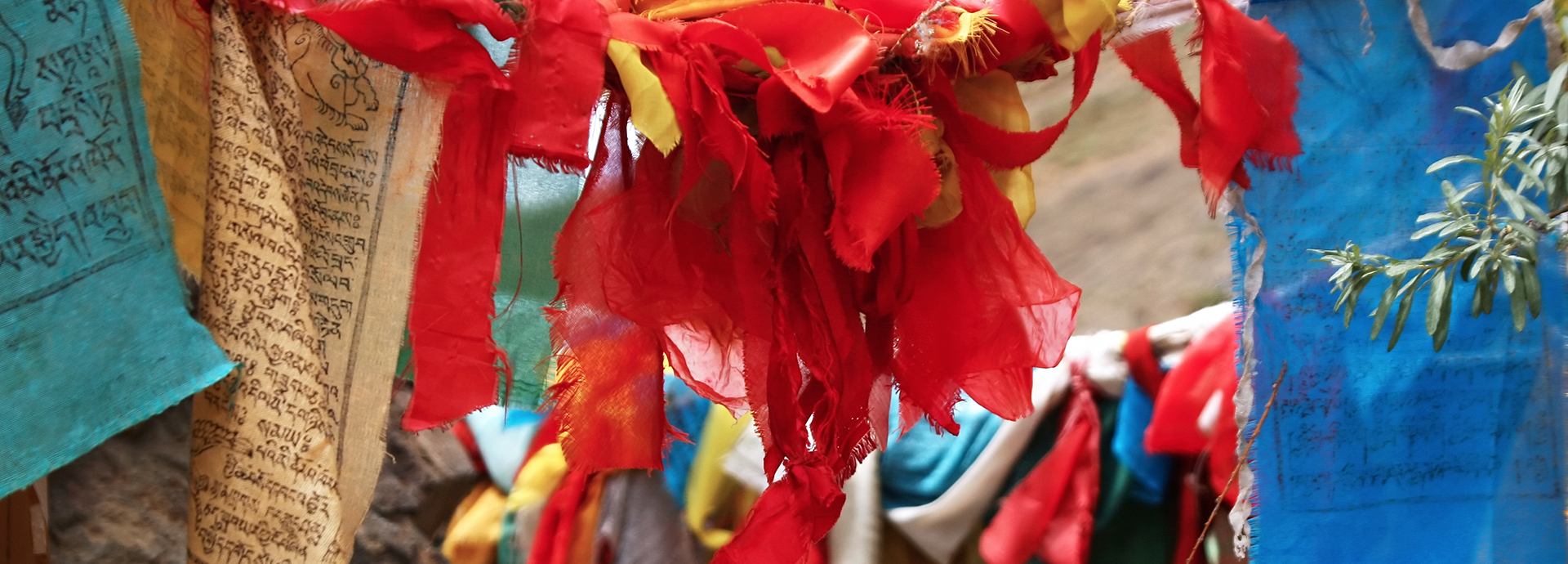
AIRPORTS & TRAVEL
TRAVEL BY AIR
Drukair & Bhutan Airlines are the national carriers of Bhutan, operating from Paro to nine cities in five countries. Both airlines operate late model Airbus A319 jet aircraft & Drukair also operates one ATR 42 twin turbo-prop aircraft for its shorter haul international and domestic routes.
Drukair and Bhutan Airlines are the ONLY airlines that currently have permission to fly in and out of Paro, due to the technical difficulty of landing in Bhutan, and both are restricted to flying during daylight hours. Flights can sometimes be delayed or cancelled due to unfavourable weather conditions and in some circumstances, the flight will stop for the night at a transit station where it is not possible to remove checked luggage. You are therefore advised to CARRY ALL ESSENTIAL ITEMS such as medicines and toiletries AND change of underclothes in your carry-on bag.
When travelling from Australia we recommend overnighting in Bangkok, Singapore or Delhi prior to connecting with your onward Drukair or Bhutan Airlines flight. If you have no option but to transit directly, please make sure that you have a minimum of 5 hours transit time. On your return flight please ensure you have a minimum of 5 hours or more and ensure that you are travelling on a ticket that can be changed. Please remember, any change in schedule, departure or arrival time, of your Druk Air or Bhutan Airlines flight is beyond our control and will, in most circumstances, be to guarantee your safety. All assistance will be offered, however you are responsible for ensuring that the airline ticket you purchase allows for re-issue, reschedule or cancellation.
TIP: On check-in at the airport for your flight into Paro request a seat on the left hand side of the plane for the best mountain views and vice versa on your departure.
BAGGAGE ALLOWANCE
Drukair/Bhutan Airlines allow two suitcases that are restricted to a combined weight of:
Economy Class
20kg checked in + cabin baggage
Business Class
30kg checked in + cabin baggage
Carry-on cabin baggage
Strictly limited to one piece. Must not exceed 45cm x 35cm x 20cm and 5kg in weight
Please be aware:
Flights into Bhutan are restricted to daylight, are weather dependent and can sometimes be delayed or cancelled.
CUSTOMS – on entry into Bhutan
All visitors are required to complete a Customs Declaration Form and an Immigration Form before your plane lands in Bhutan. The immigration form must remain with your passport until you leave the country.
Alcohol : spirits are limited to 1 litre per person, however Bhutanese Vodka, Whiskey and Run can be bought locally at reasonable prices. Gin is harder to find and wine is expensive as it is generally imported (including Jacobs Creek!) so if these are your preference we suggest purchasing Duty Free.
Visitors are advised to be cautious when purchasing old or used items as the export of antiques is strictly prohibited. It is recommended you keep your receipt for any old or used items that you purchase in Bhutan in case customs authorities request to see them when you depart.
Bhutan has become the first nation in the world to ban the sale and the consumption of tobacco. Whilst you can still bring in cigarettes for private consumption (absolutely no smoking in public) cigarettes will attract a duty of 100% sales tax + 100% customs duty. The maximum allowable import is 800 cigarettes, 150 cigars and 750g of other tobacco products.
TRAVEL WITHIN BHUTAN
Travel by road in Bhutan is without question an interesting experience. In general, the well-travelled roads around Paro and Thimpu are in good condition – there is even a double lane highway into the capital now! Though away from the main roads in the west you can expect to see deteriorating road surfaces. It is not uncommon for there to be up to 17 bends per kilometre down the mountainous hills that make up the country, reducing speeds to between 30 to 50km per hour.
It is often hard to predict times and distances in Bhutan, however your guides will make the best effort to get you to your next destination in a timely manner. Weather, road works, road blocks (landslides) & vehicle breakdowns can all impact on your itinerary so please keep this in mind while travelling.
With all that said and done the most important thing to remember whilst travelling by road in Bhutan is to relax & enjoy the easy-going rhythm of road travel in this beautiful and delightfully picturesque country. You will undoubtedly be asking your driver to stop every few kilometres so you can take a photo of the breathtaking scenery!
| From | To | Distance | Driving Time (approx.) | |
|---|---|---|---|---|
| Paro | Thimphu | 65 kms | 1 hour | |
| Thimphu | Phuentsholing | 176 kms | 6 hours | |
| Phuentsholing | (South) Bagdogra (India) | 170 kms | 4 hours | |
| Thimphu | Punakha | 77 kms | 3 hours & 15 minutes | |
| Punakha | Wangduephodrang | 13 kms | 45 minutes | |
| Wangduephodrang | Trongsa | 129 kms | 4 hours & 30 minutes | |
| Trongsa | Bumthang | 68 kms | 2 hours & 30 minutes | |
| Bumthang | Mongar | 198 kms | 7 hours | |
| Mongar | Lhuentse | 76 kms | 3 hours | |
| Mongar | Trahigang | 90 kms | 4 hours | |
| Trashigang | Samdrup Jongkhar (South) | 180 kms | 6 hours | |
| Samdrup Jongkhar | Guwahati (India) | 110 kms | 3 hours |

TREKKING
Trekking is a popular activity in Bhutan due to the incredible wilderness and scenery. Although the trails can become very muddy and wet at the end of the rainy season and can get very cold in the spring and autumn, you will find that the walks and treks in Bhutan are mostly on established pilgrimage and village trails used by locals and monks and there are no particularly difficult sections. Some trails may be more steep and rocky than others so gaitors, walking poles, waterproof boots with ankle support and winter wear are all very helpful. It is important to note that your guide will generally also carry with them extra mineral water, snacks and a comprehensive mountain first aid kit at all times. A detailed packing list will be provided for your specific hike or trek.
SUGGESTED EQUIPMENT & PACKING
- We recommend a durable, water-resistant, soft duffel bag (for treks) or lightweight soft-sided suitcase as your checked luggage. Hard suitcases are not practical due to space limitations.
- A small backpack or hip-pack is ideal for carrying bottled water, camera, rain gear, etc., while on excursions where the terrain requires your hands to be free.
- Choose a distinctive, easily identified bag, and use a luggage tag for bag identification by staff.
- Casual clothing is appropriate at all times.
- Lightweight & light coloured clothes will help keep you cooler. Keep in mind that synthetic fabrics dry faster than natural fibers like cotton, especially in humid areas, so you can pack less if you are able to wash & dry clothes easily.
- Some hotels may have laundry services, but you will probably need to wash some clothes en route.
- You may want to bring an extra smaller, collapsible (lockable) duffel, to leave items in a city hotel while you are on excursion or to use on your return for souvenirs.

MONEY MATTERS
CURRENCY AND EXCHANGE
The Ngultrum is pegged to the value of the Indian Rupee (INR). INR100 & INR50 are accepted in Bhutan, however Ngultrum is not accepted in India.
Bhutan is predominantly a cash economy.
There are very limited ATM facilities available in the major towns across Bhutan. Visa and Mastercard are only accepted in a small number of handicraft stores in Thimphu and only in the high-end hotels across Bhutan.
AMEX is rarely accepted, if at all, so please do not rely on your AMEX as your only source of money.
We suggest that you do your banking whilst in Paro or Thimphu and carry local currency as ATM and banking facilities outside of the major cities are almost non-existent.
You may also be required to show your passport when you exchange money so exchanging money at the airport is highly recommended.
Currencies that can be exchanged on arrival in Bhutan include the Australian Dollar, U.S. Dollar, Pound Sterling, Euro, Japanese Yen, Swiss Franc, Hong Kong Dollar, Canadian Dollar and Singapore Dollar.
TELL YOUR BANK
We highly recommend you advise your bank of your destinations and travel dates. This should prevent any of your transactions being deemed as ‘out of the ordinary’ (and possibly stopped) due to their unexpected location.
TIPPING
Tipping has recently become common practice in Bhutan’s tourism industry. Tipping is entirely at your discretion and dependent on the level of service you have received. Usually, the same guide and driver will accompany you throughout your trip in Bhutan. If you feel that your guide has provided good service to you, we suggest a tip of a minimum of A$15 per person, per day; and a minimum tip of A$10 per person, per day for your driver.
Of course if you feel you have received exceptional services, you may wish to provide a larger tip. If you have not received the level of service that you were expecting then do not tip or reduce your tip accordingly. If you are travelling in a group tips should be collated and handed over to the guide or the driver in a single packet at the end of the tour.
SPENDING MONEY
Your itinerary and invoice will indicate inclusions and exclusions throughout your itinerary booked by The Classic Safari Company.
As all tours to Bhutan must be prepackaged most trips are offered on an all inclusive basis – with the only extras being drinks, tips, laundry, items of a personal nature and any optional activities. If you are unsure of what is included please discuss this with your consultant.
We recommend that you bring approximately A$50 per person, per day for items not included in the cost of your journey to cover items such as drinks, tips and souvenirs. This will, of course, vary person by person depending on what you drink and how much you like to shop so this is a guideline only. Please note that alcohol in high end hotels is pricey!
SHOPPING
The most popular Bhutanese arts and handicrafts souvenirs include:
- Thangkha paintings
- Statues
- Wooden Masks
- Silver & Metal Crafts
- Textiles
- Stamps

Bartering is not as common in Bhutan as in other Asian countries. In the outdoor markets and some shops it may be possible, but many prices are fixed. It is best to ask your guide when haggling may be appropriate.

POWER, TECH & PHOTOGRAPHY
POWER
There are basically two main voltage systems used around the world: 110 Volt ‐ USA, Canada, Spain & Japan 220 Volt ‐ the rest of the world. In simple terms, the power supply available at the socket is roughly twice as powerful in 240V countries as in 110V countries.
The voltage in Bhutan is 230 – 240 Volts, therefore if you wish to use any electronic devices from Canada, the US or Japan you’ll need a voltage converter AND a plug adapter. Australia operates a 220V currency and therefore you only require an adapter for Australian appliances.
There are three associated plug types used in Bhutan, TYPES D, F and G. The most common socket is TYPE G. Alternatively you may prefer to invest in an International Travel Adaptor that provides you with more than one option.
Many adaptors also have a USB port so you can plug your smart phone, or I‐product directly into the adaptor.
For the latest & most up to date information about voltage and what adaptors to travel with refer to: www.korjo.com
ADAPTORS
Bhutan uses a 230V – 240V electrical current and there are three associated plug types, TYPES D, F & G.

Please note that electricity is often unreliable & cannot be guaranteed, particularly outside of the major cities as there is very limited power in most small villages, so please be sure to pack spare, charged batteries for your smartphone and cameras and re-charge at every opportunity.
SMART PHONES & DATA
Smart phones can be wonderful travel companions. Not only will they help you stay in touch with friends and family, they’ll guide you through unfamiliar cities, enlighten you on local attractions, translate foreign languages and produce great photographs.
Left unchecked they can also wreak havoc with your travel budget!
The reason is that some (but not all) of the fun and useful functions smart phones perform require the downloading of data via an internet connection. Unfortunately, if you’re paying for data roaming it can be an expensive exercise and you run the risk of returning home to an expensive shock.
If you want to make the most of your mobile device, while avoiding unexpected and unpleasant charges, keep in mind the following tips:
- Buy an International Roaming Pack ‐ think about buying a pack from your phone network before departure in order to access cheaper rates
- Remove your regular SIM and replace it with a pre‐paid SIM either purchased before departure or upon arrival. Not only will you benefit from better prices for data, voice calls and SMS, but there will be a pre‐set limit on how much you can spend giving you some piece of mind.
- Turn off global roaming ‐ the problem with data roaming is not simply the exorbitant costs travellers are charged for downloading megabytes, it’s the fact that this data is often being sucked down without you even being aware of it.
To be safe, the easiest thing to do is simply disable data roaming.
We do NOT recommend taking advantage of free-wifi in public places such as airports and malls. The connection is often insecure, and you could run the risk of data & information theft. If you do need to go online, whether to check your emails, use a handy app or make an online booking – your best option is to find SECURE free or affordable Wi‐Fi.
PHOTOGRAPHY
The photography opportunities on a trip to Bhutan are immense so it’s important to carry plenty of memory cards and batteries. If relying solely on your smart phone it is advisable to carry a spare cable and a battery pack.
Shops in Bhutan do not sell equipment or accessories, and even locally available batteries from major brands are mostly unreliable. Note that photography is not permitted inside dzongs, monasteries and religious institutions. It is always best to ask permission before taking photos of people.
Zoom lenses are a great asset as are wide-angle lenses for landscape shots. The best over-all lens to take would be a zoom in the 70mm-300mm range.
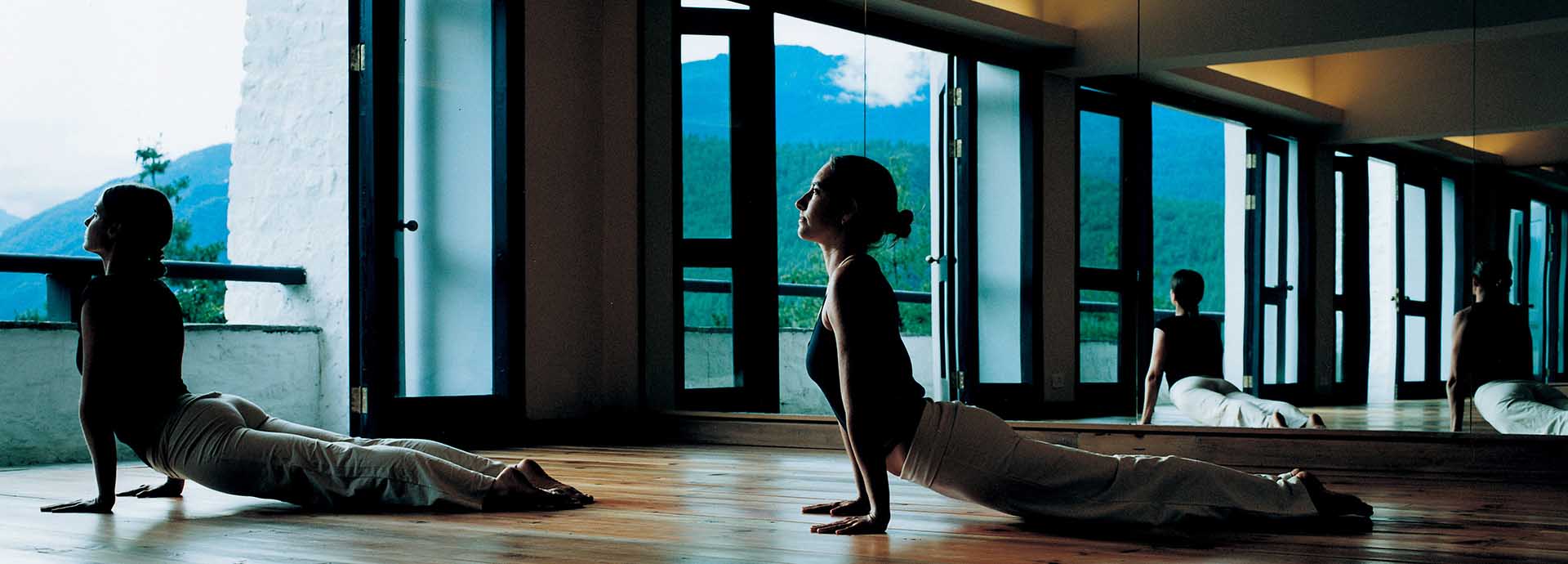
CLASSIC SAFARI CO TRAVEL APP
Your very own App for travel – let the countdown begin!
The CLASSIC SAFARI CO App is supplied courtesy of The Classic Safari Company. It is a very handy tool with the upside being that you can view all your travel documents on your device at any time, whether connected to the internet or not. It will be where we house all your travel documents. Our App along with emailed digital copies of your travel documents, will be all that you will require once travelling.
Therefore, it is important to take the time to become acquainted with The Classic Safari Co App, and contents, well before you travel.
To start viewing your travel documentation you will need to download, at no cost, The Classic Safari Co App on your Phone, iPad or Tablet by following these steps:
- STEP 1 : Be sure you have internet access
- STEP 2 : Open the App store on your device and search for ‘The Classic Safari Co’ or download on the Apple App Store or Google Play
- STEP 3: Once installed and opened, you’ll be asked for your User ID and your Unique Passcode. Please enter the following:
- USER ID: TCSC
- UNIQUE PASSCODE: NAME+FILENUMBER
Click accept and wait for your travel documents to download before starting your journey on the App.
NOTE: If you prefer to access your trip details and documents on your personal computer, you can do so by visiting https://web.vamoos.com/. Please use the same user ID and unique passcode provided above.
HOW TO DOWNLOAD
Open the App store on your device and search for ‘The Classic Safari Co’. Alternatively, using your device click the icons below to download on the Apple App Store or Google Play
OUR APP LOOKS LIKE THIS:

ON THE APP YOU WILL FIND:
- Your travel documents
- Destination information
- Maps
- Real time weather data
- E-tickets and flight information (if applicable).
ADDITIONAL OPTIONAL DOCUMENTS
We can also upload additional documents such as Tourist Visas, Vaccination Certificates, and your Travel Insurance Certificate if you wish to have them on hand as you travel. If you would like us to add these for you please email any additional documents in PDF format (only) and we will add them to your profile. We do not recommend adding or sharing your passport information online.
UPDATES & CHANGES
We will update all documents if and when changes occur, and prior to your departure we will furnish you with emergency contact information and any relevant travel vouchers.
OFFLINE USE
The greatest benefit of using our App is that once the initial download has occurred you will no longer require internet access to view what has been uploaded for you.
SECURITY
Please note that the software developer of our app (Vamoos) cannot guarantee the safety of personal data against identity theft, particularly if you are using a free wifi service whilst travelling. We do not recommend using free wifi services anywhere in the world.

ALREADY HAVE THE CLASSIC SAFARI COMPANY APP INSTALLED?
If you already have The Classic Safari Co App installed, to load a new trip you simply need to follow these steps:
- STEP 1: Open The Classic Safari Co App on your device and in the top left corner you will see 3 small horizontal lines (the burger menu). Click these and look for the words ‘Load New’… click this and then enter:
- USER ID: TCSC
- UNIQUE PASSCODE: NAME+FILENUMBER
- STEP 2: Wait for your travel documents to download before starting your journey on the App.
Should you have any questions about the App or the information uploaded for you please don’t hesitate to get in touch.
Thanks, have fun and let the countdown to your departure begin!


